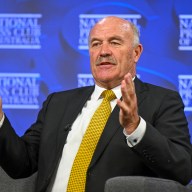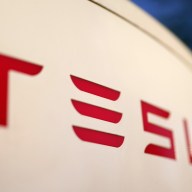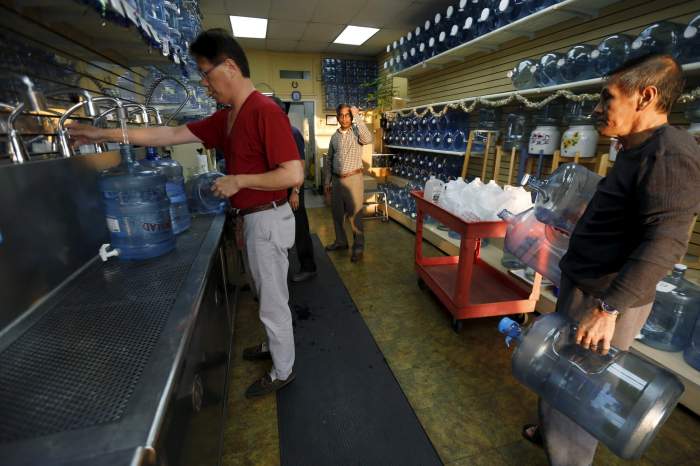By Lucia Mutikani
WASHINGTON (Reuters) – Growth of U.S. labor costs was not as robust as initially thought in the third quarter, suggesting inflation could remain tame in the near term.
The sharp downward revision to labor costs, reported by the Labor Department on Tuesday, also pointed to some easing of the squeeze on profit margins. Corporate profits have been reduced by strong labor cost growth that has outpaced revenue. With worker productivity still sluggish, however, the pace of growth in labor costs is likely to remain solid.
“This is certainly good news for companies’ profit margins which have been under pressure,” said Lydia Boussour, a senior economist at Oxford Economics in New York. “However, slower productivity growth and steady compensation growth will keep upward pressure on unit labor costs going forward.”
Unit labor costs, the price of labor per single unit of output, increased at a 2.5% annualized rate in the third quarter. They were previously reported to have advanced at a 3.6% rate. Compared with the third quarter of 2018, labor costs grew at a 2.2% rate, rather than the previously estimated 3.1%. Growth in hourly compensation was also revised lower, to a 2.3% rate in the third quarter, from the originally reported 3.3% pace. Hourly compensation grew at a 3.7% rate compared with the third quarter of 2018, instead of the previously reported 4.5% pace.
Last quarter’s gains in unit labor costs and compensation are in line with other measures showing moderate wage gains. A survey of small businesses on Tuesday showed the share of owners raising wages was unchanged in November. While the proportion of those planning to increase compensation rose to near a 30-year high, there was no strong appetite to increase prices.
These developments indicate inflation will probably continue to run below the Federal Reserve’s 2% target.
“That is about the same as the pace of inflation and indicates stable inflation,” said Rubeela Farooqi, chief U.S. economist at High Frequency Economics in White Plains, New York.
Fed officials started a two-day policy meeting on Tuesday.
The central bank is not expected to cut interest rates on Wednesday against the backdrop of relatively upbeat economic data, including a sharp narrowing in the trade deficit in October, a rebound in orders for big-ticket items and a surge in job growth in November.
The Fed cut rates in October for the third time this year, but signaled a pause in the easing cycle that started in July when it reduced borrowing costs for the first time since 2008.
The central bank’s preferred inflation measure increased 1.6% in the 12 months through October, slowing from 1.7% in September. November data will be published later this month.
The government reported last month that after-tax profits without inventory valuation and capital consumption adjustment, which corresponds to S&P 500 profits, decreased $11.3 billion, or at a rate of 0.6% in the third quarter. Profits were down at a rate of 0.4% compared with the third quarter of 2018.
The dollar slipped against a basket of currencies. U.S. Treasury prices fell, while stocks on Wall Street were mixed.
PRODUCTIVITY MISMEASURED?
The government also confirmed that worker productivity fell by the most in nearly four years in the third quarter as a rebound in hours, driven by a surge in the volatile self-employed and unpaid family workers component, outpaced output.
Nonfarm productivity, which measures hourly output per worker, decreased at a 0.2% rate in the last quarter, the biggest drop since the fourth quarter of 2015. Productivity was previously reported to have declined at a 0.3% pace in the July-September quarter.
Productivity grew at an unrevised 2.5% rate in the second quarter. Hours worked increased at a 2.5% rate last quarter.
The government last month revised up third-quarter gross domestic product growth to a 2.1% rate from a 1.9% pace.
Compared with the third quarter of 2018, productivity increased at a 1.5% rate, instead of the previously reported 1.4% pace. Tepid productivity suggests the economy is unlikely to achieve the Trump administration’s goal of 3% annual growth.
Productivity grew at an average annual rate of 1.3% from 2007 to 2018, below its long-term rate of 2.1% from 1947 to 2018, indicating that the speed at which the economy can expand over a long period without igniting inflation has slowed.
Sluggish productivity has been blamed on a range of factors, including a shortage of workers, low capital expenditure and inaccurate measurement on the information technology side.
Fed Chairman Jerome Powell said in October the U.S. central bank was “carefully assessing the implications of possibly mismeasured productivity gains.”
(Reporting by Lucia Mutikani; Editing by Paul Simao and Steve Orlofsky)



















